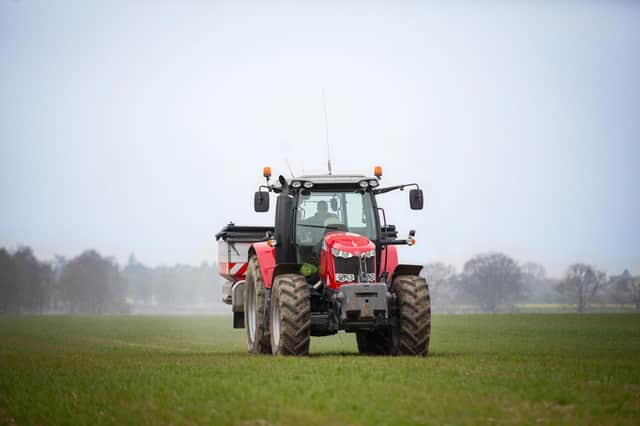Climate Change Plan points to the future of Scottish farm policy


Going back two years, the 2020 annual general meeting of the Scottish Agricultural Arbiters and Valuers Association (SAAVA) marked the last event in the spring circuit to take place before the first wave of Covid saw lockdown kick in, and the start of the steep Zoom learning curve for all of us.
It was possibly fitting, therefore that after 24 months of solitude, the same conference kicked off what everyone is hoping might be a return to at least some sort of normality, where people can meet in the flesh rather than on the screen.
Advertisement
Hide AdAdvertisement
Hide AdBut while time might have moved on and new uncertainties thrown in the path of a predictable future, the major topic of the day remained more than a little familiar – the lack of information on the Scottish Government’s plans for future farm policy.
It’s long been a source of complaint that the Scottish Government’s slow but steady approach - which has reigned since the Stability and Simplicity plan for the transition away from the EU’s Common Agricultural Policy towards the first domestically derived policy for over 40 years - appears to have had the emphasis on ‘slow’.
And while numerous committees, groups, champions and oversight boards, have been created , the gestation of the new policy seems to have run well over what many would have termed the due date, leaving most of us wondering just how traumatic the birth pangs will be when the over-baked result is finally delivered.
But while most of us wondered, the forensic skills of one of the regulars at the SAAVA meetings – the inimitable Jeremy Moody who is the secretary and chief advisor to the organisation’s sister group in England, the Central Association of Agricultural Valuers (CAAV) - had been applying their forensic skills to a recent publications coming from the Scottish Government.
Shortly after last year’s on-line conference, a chat with Moody revealed that he believed that against all that farmers believed, the Scottish Government had actually revealed rather a lot about its future plans for the sector. But rather than doing this in a discussion paper aimed at the sector, it had, instead, been hidden “in plain sight” in the administration’s update to its Climate Change Plan.
So, following this pattern of hiding things where people didn’t look for them, Moody has continued to look in unlikely places for firm signs of the administration’s intentions.
This time he said the clues have been hidden in even clearer view and Moody believes the recently published Vision for Scottish Agriculture could be the legislative equivalent of the Rosetta Stone in translating what our masters at Holyrood are really thinking.
And while most dismissed the paper as a “fluffy” document, ‘big on ambition and aspiration but short on detail, Moody thinks different – stating it outlines a clear bargain that urban areas will to support farmers on the quid-pro-quo expectation that the sector will deliver on climate change and biodiversity:
Advertisement
Hide AdAdvertisement
Hide Ad“And to fulfil their part of the bargain, it states that farmers will need to adopt sustainable and regenerative production practices - and that there will be a special focus on the role of the livestock sector as it has been highlighted as the major contributor to greenhouse gas emissions.”
The promise that direct payments would still continue to account for half also has strings attached - for the application of ‘conditionality’ to these payments will expect recipients of support to deliver targeted outcomes on biodiversity gain and emissions reductions:
“This suggest something much more demanding and goal focused than has been seen under cross compliance” warned Moody.
While the proposals in the farmer led groups could help reduce emissions, ScotGov estimated that this would cover only 12% of the 31% reduction required by 2032, leaving a lot to be made up.
And Moody believes that it is being assumed that the rest of this target will be made up by land use change – an outcome which the document sates will only be achieved by ‘cultural change’ at farmer level.
So, all in all a more radical approach than the ‘slow but steady’ approach has led the industry to anticipate could well be on the cards at the big reveal.
Comments
Want to join the conversation? Please or to comment on this article.